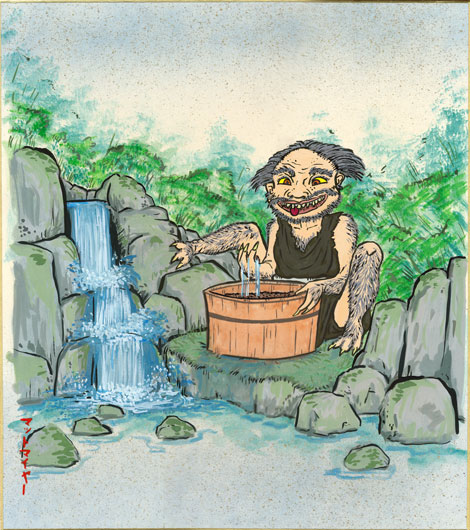Of all the yokai I’ve heard of, today’s has become my favorite. This is the kamaitachi, or to translate its name into English, the sickle weasel. It’s a pretty dangerous beast; it rides on a gust of wind and slices up its victims legs with its sickles. Another version says that it’s actually a trio of weasel brothers, the first of which knocks the victim down, the second of which cuts the victim up, and the third of which applies medicine to the wounds, making them appear to be only scratches, as if the person had run through brambles.
Aside from the name, which is awesome enough on its own, I think one of the reasons I love the kamaitachi so much is because it really just sounds like whoever made it up couldn’t think of anything good, so he just slapped some knives onto a weasel and called it a day. Though my wife tells me that this is definitely something to be feared, I find it hard not to chuckle at it, just a bit. Anyway, it’s a really cool yokai, so I hope you like my illustration!

Kamaitachi
Sickle weasel… *snicker*






